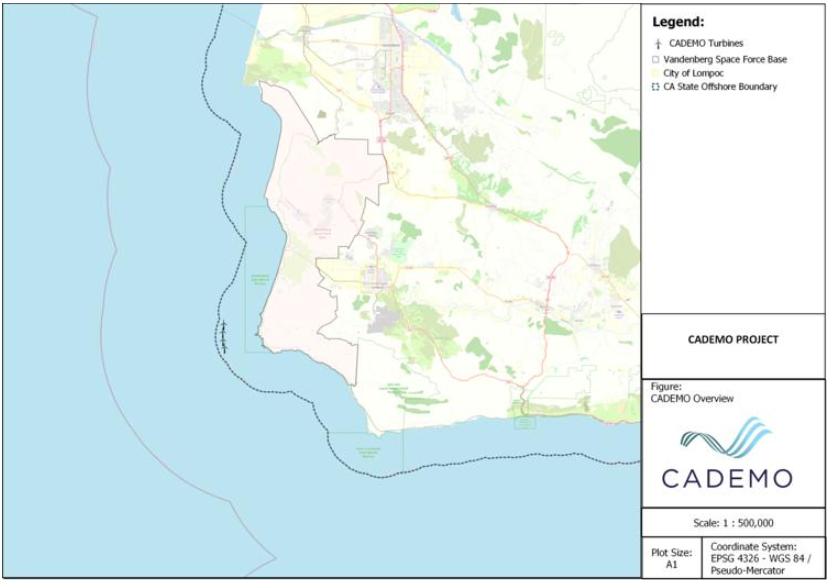
Floventis Energy and the Santa Ynez Band of Chumash Indians on Nov. 8 signed a community benefits agreement for a floating wind farm that is expected to be operational years before deployment of California's larger-scale wind projects in the Morro Bay and Humboldt federal lease areas.
To be located in ocean waters near Vandenberg Space Force Base in Santa Barbara County, California, the proposed CADEMO project, which will eventually be renamed by the tribe, will consist of four 15-MW floating turbines in state waters off Point Arguello.
Under the agreement, project operators will work closely with the tribe on state and federal environmental reviews, which are already underway. They will also support a "traditional cultural landscape study" by the tribe and will work with local building and construction trade groups and community colleges to boost apprenticeship and degree programs related to the project, according to a news release.
The agreement also includes a new research institute that will be established and operated by the tribe to develop tribal oceanographic expertise and best practices for environmental co-management of offshore and nearshore resources and the proposed Chumash Heritage National Marine Sanctuary.
"The global climate crisis demands that California develop offshore wind as a component of its strategy of getting to 100 percent clean energy. But this must be done in a manner that meets a wide variety of stakeholder concerns, from Native tribes to the military to labor unions to environmental groups," Mikael Jakobsson, director of CADEMO owner and developer Floventis, said in the release.
In July, CADEMO and the U.S. Department of Defense signed a mitigation agreement to allow the project to operate in proximity to Vandenberg Space Force Base's launch activities. Last year, CADEMO, the State Building and Construction Trades Council and the International Brotherhood of Electrical Workers 1245 signed a project labor agreement for representation and hiring practices in the construction, installation and maintenance of the project. Each of these steps is a precedent for California offshore wind and demonstrates best practices in stakeholder relations and social equity in the industry, according to the release.
"This agreement is a big step, not only for our project, but for the offshore wind industry as it engages with local California Native tribes," Jakobsson said in the release. "Our project site is located in the ancestral waters and lands of the Santa Ynez Chumash, and we are honored to be collaborating with the Tribe."
A July report by the Offshore Wind High Road Training Partnership found that the primary jobs impact from projects such as CADEMO would take place at major port facilities outside of the immediate region (California Energy Markets No. 1751).